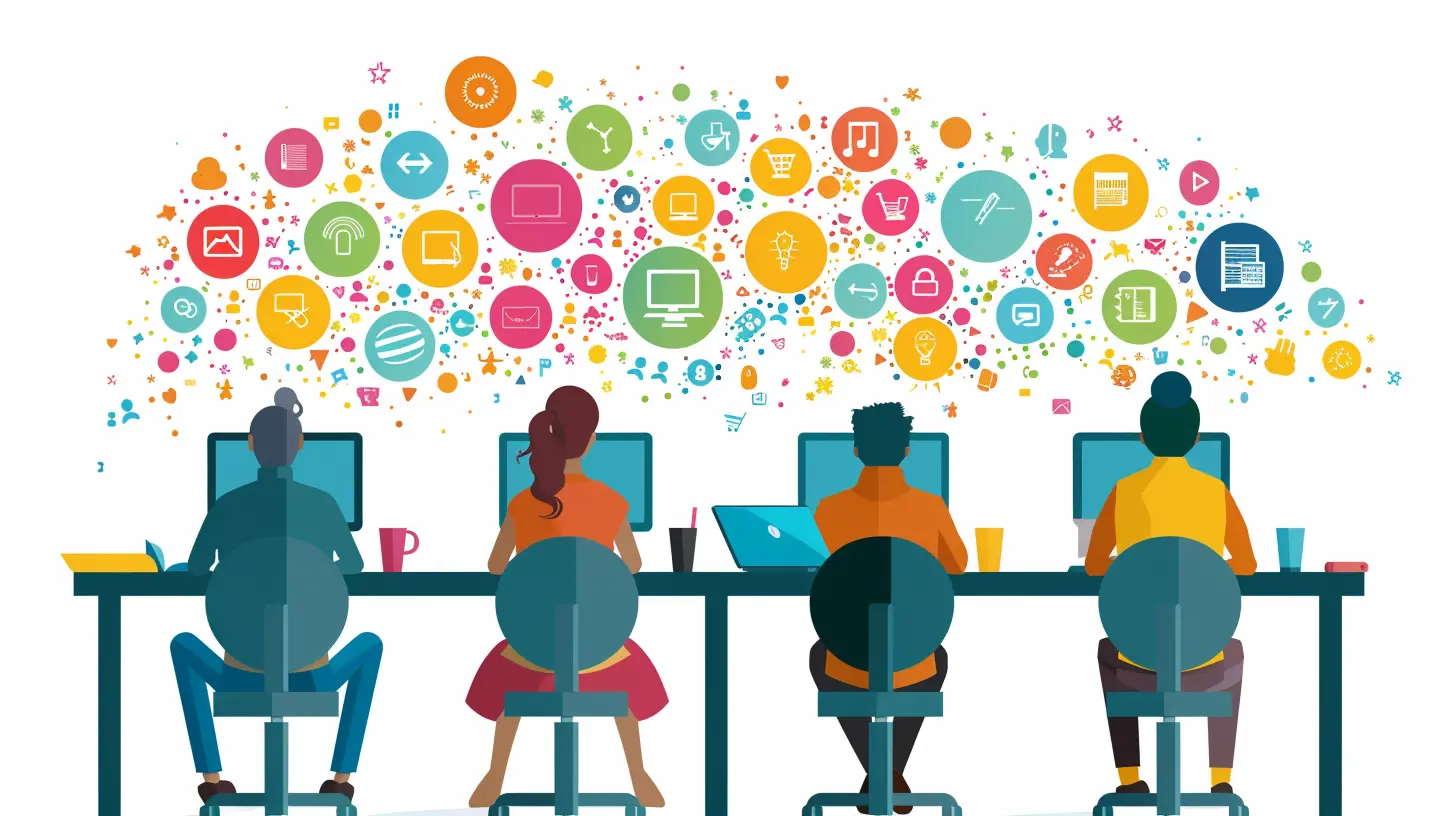Policies for Bridging the Digital Divide in Education
20 September 2025
We all remember the shockwave the pandemic sent through our classrooms—one minute kids were learning algebra and ancient Egypt the old-fashioned way, and the next, we were on Zoom trying to figure out how to unmute ourselves. Wild, right? But that chaos also threw a big, blinding spotlight on a problem we’ve had for years: the digital divide in education.
Let’s get real for a second. In a world where you can order tacos at 2 AM with a couple of screen taps, it's kind of ridiculous that millions of students still don't have access to the internet or a working device for school. Bridging the digital divide isn't just some techy buzz phrase—it's a matter of fairness, opportunity, and the future of education. So, let’s chat about what’s being done policy-wise to fix this, and maybe even toss around some ideas that could help close the gap for good.

What is the Digital Divide Anyway?
Okay, before we dive into the meat and potatoes (or tofu and quinoa, depending on your vibe), let’s define what we’re even talking about.The “digital divide” in education is the gap between students who have easy access to digital tools—like reliable internet, laptops, or tablets—and those who don’t. It’s not just about having fancy gear; it’s about having equal chances to succeed in a digital classroom, whether it's in-person, hybrid, or completely online.
So, who’s affected? Well, it disproportionately hits low-income families, rural communities, and marginalized groups. That means a whole chunk of our future workforce could be left behind unless we level the playing field.

Why Is Bridging the Digital Divide So Crucial?
Let’s think of education like a marathon. If some runners have shoes and others are barefoot, is it really a fair race? The digital divide makes it harder for some students to even get to the starting line. If we want a future where every kid can chase their dreams, we’ve got to make sure they have the tools to compete.Having access to technology helps students:
- Do homework and research
- Engage in virtual learning
- Access online tutoring and academic tools
- Learn digital literacy (a.k.a. how not to get tricked by fake news or clickbait)
It’s not a luxury anymore—it’s the new minimum requirement for modern education.

The Government Is Stepping Up (Slowly, But Surely)
Now, no shade intended, but governments aren’t always the fastest when it comes to addressing problems. Still, give credit where it’s due—some real progress has been made through policies and strategic initiatives aimed at closing the gap.1. The E-Rate Program: A Lifeline for Schools and Libraries
The E-Rate Program, run by the FCC, is like the internet fairy godparent for schools and libraries. Since 1996, it's been providing discounts on services like internet access and internal tech infrastructure.After the pandemic hit, E-Rate got a glow-up. More schools started applying, and the applications included things like Wi-Fi hotspots and even devices.
But here's the catch: schools have to navigate a ton of paperwork and red tape. So while it’s helpful, it’s not exactly a zipline to tech equality. Yet, it’s a solid step.
2. The Emergency Connectivity Fund (ECF)
COVID-19 led to the launch of the Emergency Connectivity Fund—a multi-billion dollar program to help schools and libraries provide students with broadband and devices to learn from home.Think of it like a giant tech allowance dished out by the government. Schools could use this to buy laptops, tablets, mobile hotspots, modems—you name it.
The fund was a strong swing in the right direction, but it was temporary. It's like giving someone water in a drought without planning for future rain. A good start, but we need a long-term solution.
3. Digital Equity Act
Passed as part of the Infrastructure Investment and Jobs Act in 2021, the Digital Equity Act focuses powerfully on—you guessed it—digital equity.The act provides federal funding to states for initiatives like:
- Tech training for students and families
- Expanding broadband infrastructure
- Increasing device access
- Supporting digital literacy programs
This one feels less like a band-aid and more like a full-on first aid kit. Props to whoever pushed this through!

State and Local Policies Doing Cool Things
Just because something isn’t federal doesn’t mean it ain’t effective. Some local and state governments are absolutely killing it when it comes to innovative policies.4. One-to-One Device Programs
Ever heard of a school giving every student a laptop or tablet? That’s a one-to-one program, and more districts are hopping on that train.Some cities, like Chicago and New York, launched ambitious efforts during the pandemic to ensure every student had a device. Obviously, this isn't cheap—but it's powerful.
The challenge? Devices break. Kids outgrow programs. Tech evolves. Policies need to include funding for replacing and updating equipment annually, not just a one-time laptop haul.
5. Home Internet Partnerships
Schools are partnering with internet providers to offer discounted (or even free) broadband to families who need it. Some areas installed Wi-Fi on school buses or used mesh networks to beam internet into underserved communities.Is it high-tech wizardry? A little. Is it working? Yep.
But we need consistency. Right now, opportunities vary by zip code, and your education shouldn’t depend on your GPS coordinates.
6. Public Tech Hubs and Community Learning Centers
Think of them like free co-working spaces for students. These are safe spots with high-speed internet and devices where kids can do homework, attend online classes, or get tutoring support. Some libraries and schools are already opening their doors beyond school hours to serve this function.With the right funding and staffing, this could become the norm, not the exception.
Rethinking Education for the Digital World
Hold up—bridging the gap isn’t just about slinging out tablets like Halloween candy. We need to think deeper.7. Digital Literacy and Teacher Training
Give someone a fishing rod, and they need to know how to fish, right? Same logic applies here.Many policies now include funding for training teachers, students, and even parents on how to navigate the digital world. We're talking basic computer skills, staying safe online, using digital tools for learning—you name it.
When everyone from the janitor to the school principal knows how to use digital tools, it creates a ripple effect of tech confidence and inclusion.
8. Inclusive and Accessible Technology
Let’s not forget students with disabilities. Policies now often include guidelines for accessibility—closed captains on videos, screen readers, speech-to-text tools, the whole shebang.The digital world should work for everyone, not just the tech-savvy crowd.
What More Can Be Done?
Okay, so we’ve got some wins on the board. But let’s not throw a victory parade just yet. There’s still a LOT of work to do.So what can future policies focus on?
- Permanent funding, not just emergency splashes of cash.
- Cross-sector collaboration between governments, schools, tech companies, and communities.
- Regular audits and tracking—because we can’t fix what we don’t measure.
- Community voice—students and families should have a say in what digital access looks like for them.
The Role of EdTech Companies
EdTech companies are like the cool kids at the education party. They bring innovative tools, creative solutions, and scalable platforms to the table. But with great power comes great responsibility, right?Going forward, companies can (and should) partner with schools under fair policies that prioritize equity over profit. We’re talking affordable licensing, customizable tools for special needs, and actual customer support.
Also, how about designing platforms that don’t make you want to throw your laptop out the window? Just sayin'.
Final Thoughts: Let’s Close the Digital Divide for Good
Here’s the reality: if we want to raise the next generation of thinkers, makers, and leaders, we can’t afford to have any of them left on the sidelines because of a lack of tech access. It’s like building a spaceship but forgetting to give half the crew oxygen.The digital divide might feel like a grand canyon right now, but with smart policies, committed communities, and a little techy elbow grease, we can build a bridge that gets every kid across.
So the next time someone says “digital equity,” don’t let your eyes glaze over. Know that it’s not just policy jargon—it’s a blueprint for a better, fairer, and far more connected future of learning.
all images in this post were generated using AI tools
Category:
Education PolicyAuthor:

Monica O`Neal
Discussion
rate this article
1 comments
Uri Hernandez
Essential strategies for equitable digital access.
September 26, 2025 at 3:58 AM

Monica O`Neal
Equitable digital access requires targeted policies that prioritize infrastructure investment, affordable connectivity, and inclusive digital literacy programs.


